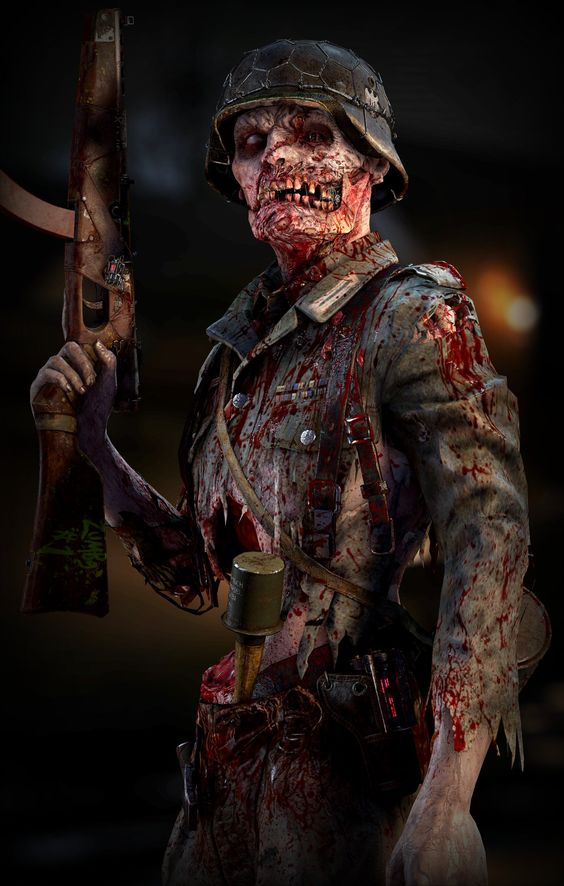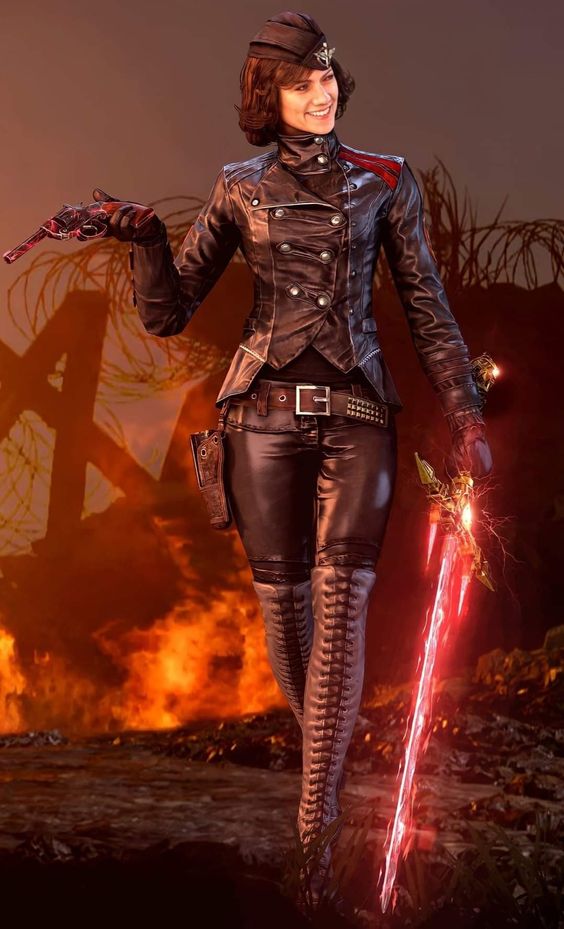My first Warzone victory was full of highs and lows that I hadn't experienced in other battle royale games, where dying can feel like running into an invisible wall in the middle of a sprint.
After winning a few early fights in the TV Station, we were all ambushed by the enemy and sent to the Gulag. We all miraculously won our one-on-one fights and returned to the fray. From there, we remained in the shadows while gradually raising funds to call in our favorite custom loadouts. I finished with nine kills for a squad total of 20 using my tried-and-true M4A1 kitted out with a full suite of attachments. Call of Duty: Warzone borrows from the best of its competitors, but it's also full of smart conveniences that have quickly made it my go-to circle-shrinking murderfest.
Much of it is due to Warzone's relaxed approach to looting. Nothing puts me off battle royale more than fiddling with weapons, ammo, and attachments in and out of menus until I've reached a meta-approved level of battle readiness. That is not how Warzone operates. There are no backpacks, and there isn't even an inventory screen.
Kitting up
In Warzone, fully equipping yourself is as simple as finding a gun you like and a few armor plates for when things get hairy. Attachments are pre-installed on weapons. Common weapons have none, whereas rarer guns have specialized attachment setups. That simplicity ensures that I spend more time playing rather than staring at the ground, pretending to be a gunner with optics and grips. The emphasis on looting has been significantly reduced, and this has completely changed my perspective while playing. In fact, by using a custom loadout with all the bells and whistles you could want, you can reach Warzone's loot ceiling in minutes.
Instead, I can concentrate on firefights, which is where Modern Warfare excels. I haven't spent much time in the 64-player Ground War mode, so it's been interesting to see how Modern Warfare's ballistics model translates to larger areas. Bullets fly fast enough up close to feel the instant feedback of hitscan. After a few dozen meters, you have to start considering bullet drop and sway. Warzone successfully bridges the gap between CoD and Battlefield for a series built on fragility and super-short time-to-kill.

Firefights feel most similar to Apex Legends, though Call of Duty's higher lethality matches my shooter preferences. A series of increasingly powerful body shields in Apex can absorb entire mags of ammo, while Respawn's tiered armor system makes some situations feel one-sided.
Warzone is noticeably simpler. Everyone has standard regenerating Call of Duty health as well as armor plates that can absorb an additional one health bar of damage. Because there is no ultra rare super armor, the time-to-kill remains constant. One or two headshots are usually enough to bring someone down. By foregoing bullet-spongy armor, the game achieves a balance between weapon damage and health that sets it apart from Apex. You die faster, but you also heal faster.
The quick deaths in Warzone are offset by the ease with which squadmates can rejoin the fight. You can not only buy respawns for teammates at Buy Stations scattered across the map, but you can also earn your life back by winning a 1v1 duel in the Gulag. The Gulag—perhaps the closest thing to purgatory I've seen in a competitive game—seemed gimmicky at first, but it establishes a pace that feels in line with Call of Duty's tradition: a game where you die and quickly re-enter the action.
Gulag fights are governed by the same rules as Modern Warfare's excellent Gunfight mode, with random mirrored loadouts. I enjoy the emotional payoff of winning a rematch in a confined, mano-a-mano duel, punching my ticket back into the fight. The Gulag alleviates the frustration I feel when I die early in other battle royales, while also encouraging me to take more risks. Frequent respawns result in an absurd number of players remaining alive near the end of the match. This makes for exciting final rounds, but it's a little disheartening to finish 18th after surviving one of the final circles.

Zone of war
A battle royale game, of course, is only as good as its map. Verdansk, Warzone's first and only map, is a massive valley of dense city centers and industrial districts that easily accommodates all 150 players. You'd think that such a large map would be a haven for bush-hugging snipers, but Verdansk is so densely packed with buildings that most of the action is limited to short and mid-range play. Instead of being domed from a mile away, the majority of my firefights played out like any other Call of Duty match. It's fantastic.
Because the loot curve in Warzone is essentially a flat line, almost any location on the map is a viable starting point. You can enter the Atlas Superstore and fight for its plentiful supply crates, but you could have the same luck roaming the peaceful eastern farmlands. That's in stark contrast to Apex Legends, where matches naturally favor teams that make perfectly timed skydives into the most dangerous zones and emerge with the best gear. I like how Warzone encourages tourism by relieving the pressure of looting.
Modern Warfare's quick aiming and movement work well with an urban map densely packed with walls and windows. On a larger scale, COD's athletic movement shines, though it isn't as aerial as Apex Legends' wall climbing and ziplines. Sprinting and vaulting are so smooth that it feels like you're floating a few feet above the ground. Even the skydiving process at the start of matches is more enjoyable. Because everyone starts with a pistol, you can perform absurd stunts like cutting your parachute, equipping a gun, and shooting in mid-air.

Royale evolved
In a genre where progression is earned through looting luck, Warzone wisely deviates with an in-game economy. Completing contracts, randomly-generated side activities shared by the entire squad with large cash rewards, is the quickest way to make money and reach your ideal loadout. There are three kinds of contracts, and one of them is as simple as capturing an objective. You are not required to take them on, but they are always enjoyable. Most importantly, they encourage players to keep moving rather than "turtling" in a building and waiting for enemies to approach them.
Warzone borrows heavily from standard Call of Duty to improve battle royale, but one of its worst signature features has also made the jump—killstreaks. Players can purchase killstreaks that can completely win a fight for a reasonable price. The UAV is the worst offender, as it pings exact enemy locations within a city block on a regular basis. The only way to counter is to equip a class with the Ghost perk. It's not fun, just like in standard CoD multiplayer, to have to choose between more interesting perks and not broadcasting my location to the world.

There are also killstreaks for Cluster Strike and Precision Airstrike, both of which can completely wipe out an enemy squad if they don't move out of the way. It's probably good for YouTube clips, and I like the idea of forcing squads out of high ground positions, but it becomes far too ridiculous as the map area shrinks.
When a Warzone match is down to its final five squads in a small circle with no cover, everyone begins firing airstrikes at opposite corners in the hopes of getting lucky kills. Regrettably, it works. Killstreaks are a completely uninteresting addition to Warzone, as they have been in every Call of Duty game since 2007. Warzone's field upgrades, another carryover from Modern Warfare, are far more intriguing. These lower-impact gadgets, such as a grenade-blocking Trophy System, piloted scouting drone, or ammo box, are more enjoyable to use because they are less powerful and require more critical thinking.

Battle royale appears to be the main mode in the Warzone package, but there is another mode available that is entirely different in genre. Plunder takes place on the same Verdansk map as the previous game, but there is no circle, no Gulag, and infinite free respawns. The only goal is to amass a large sum of money by killing players and completing contracts. It's comparable to a raid in Escape From Tarkov, but it's more akin to The Division's PvP Dark Zone mode.
Plunder is undeniably less serious than Battle Royale. Despite the fact that you're supposed to be earning money, you can use it as a pointless playground to practice shooting, grind levels for your weapons, or drive ATVs off sick ramps. It's an excellent follow-up to a tense round of battle royale.
Warzone has a lot to recommend it. It addresses two of my major issues with the battle royale genre by limiting the randomness of loot and simplifying inventory. Warzone wants smart positioning and twitch shooting skill to determine victory, not your armor tier. The only disadvantage of Warzone's simpler loot landscape is that the meta may be too shallow to keep things interesting. Infinity Ward has aggressively updated Modern Warfare since its release last year, so I'm hopeful that Warzone will continue to grow as its own standalone game, which it will require if it is to compete with Fortnite and Apex Legends.









Post a Comment